Michele Covell
Editorial: Introduction to the Issue on Deep Learning for Image/Video Restoration and Compression
Feb 09, 2021Abstract:Recent works have shown that learned models can achieve significant performance gains, especially in terms of perceptual quality measures, over traditional methods. Hence, the state of the art in image restoration and compression is getting redefined. This special issue covers the state of the art in learned image/video restoration and compression to promote further progress in innovative architectures and training methods for effective and efficient networks for image/video restoration and compression.
Table-Based Neural Units: Fully Quantizing Networks for Multiply-Free Inference
Jun 11, 2019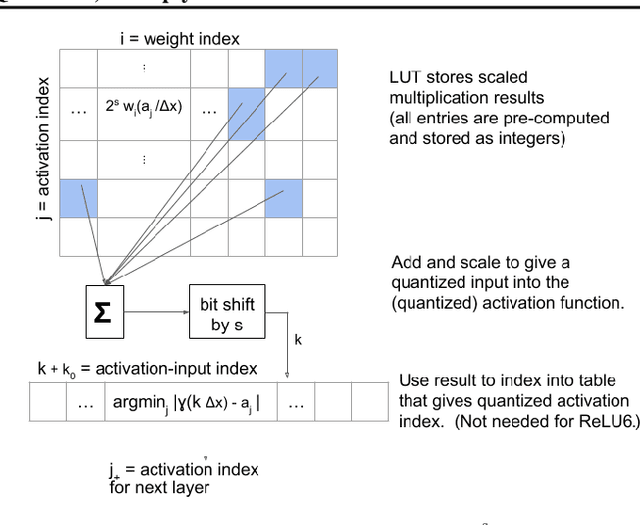
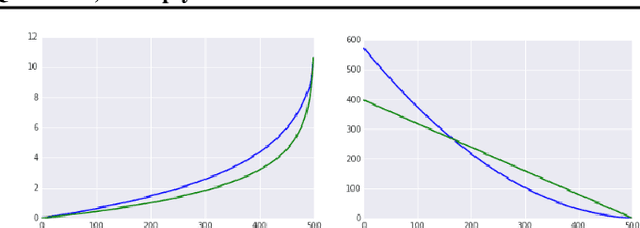


Abstract:In this work, we propose to quantize all parts of standard classification networks and replace the activation-weight--multiply step with a simple table-based lookup. This approach results in networks that are free of floating-point operations and free of multiplications, suitable for direct FPGA and ASIC implementations. It also provides us with two simple measures of per-layer and network-wide compactness as well as insight into the distribution characteristics of activationoutput and weight values. We run controlled studies across different quantization schemes, both fixed and adaptive and, within the set of adaptive approaches, both parametric and model-free. We implement our approach to quantization with minimal, localized changes to the training process, allowing us to benefit from advances in training continuous-valued network architectures. We apply our approach successfully to AlexNet, ResNet, and MobileNet. We show results that are within 1.6% of the reported, non-quantized performance on MobileNet using only 40 entries in our table. This performance gap narrows to zero when we allow tables with 320 entries. Our results give the best accuracies among multiply-free networks.
Neural Image Decompression: Learning to Render Better Image Previews
Dec 06, 2018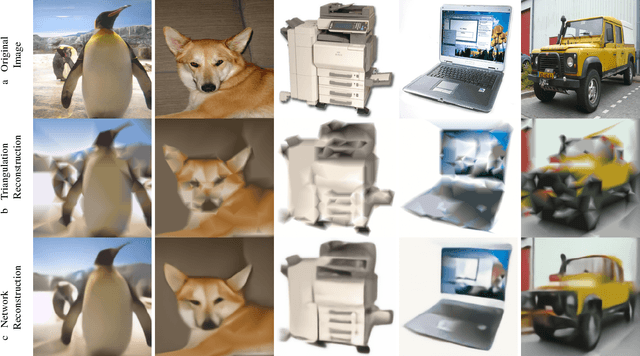


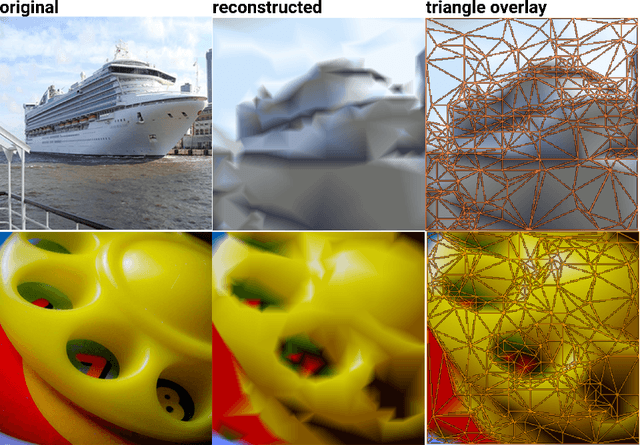
Abstract:A rapidly increasing portion of Internet traffic is dominated by requests from mobile devices with limited- and metered-bandwidth constraints. To satisfy these requests, it has become standard practice for websites to transmit small and extremely compressed image previews as part of the initial page-load process. Recent work, based on an adaptive triangulation of the target image, has shown the ability to generate thumbnails of full images at extreme compression rates: 200 bytes or less with impressive gains (in terms of PSNR and SSIM) over both JPEG and WebP standards. However, qualitative assessments and preservation of semantic content can be less favorable. We present a novel method to significantly improve the reconstruction quality of the original image with no changes to the encoded information. Our neural-based decoding not only achieves higher PSNR and SSIM scores than the original methods, but also yields a substantial increase in semantic-level content preservation. In addition, by keeping the same encoding stream, our solution is completely inter-operable with the original decoder. The end result is suitable for a range of small-device deployments, as it involves only a single forward-pass through a small, scalable network.
No Multiplication? No Floating Point? No Problem! Training Networks for Efficient Inference
Sep 28, 2018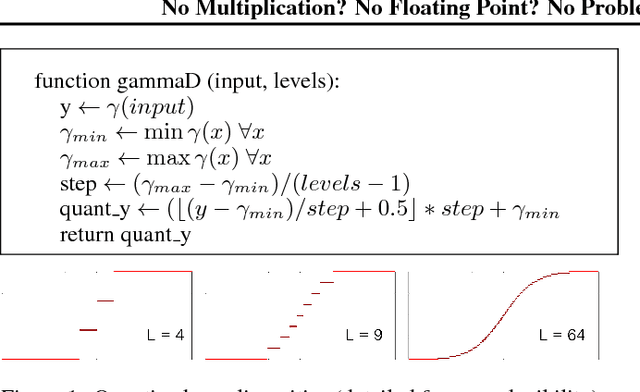

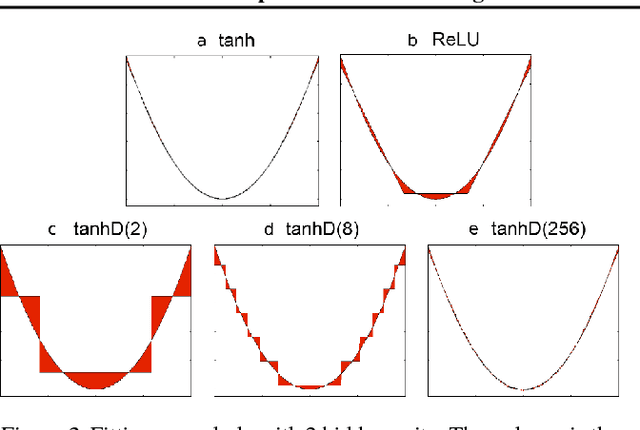

Abstract:For successful deployment of deep neural networks on highly--resource-constrained devices (hearing aids, earbuds, wearables), we must simplify the types of operations and the memory/power resources used during inference. Completely avoiding inference-time floating-point operations is one of the simplest ways to design networks for these highly-constrained environments. By discretizing both our in-network non-linearities and our network weights, we can move to simple, compact networks without floating point operations, without multiplications, and avoid all non-linear function computations. Our approach allows us to explore the spectrum of possible networks, ranging from fully continuous versions down to networks with bi-level weights and activations. Our results show that discretization can be done without loss of performance and that we can train a network that will successfully operate without floating-point, without multiplication, and with less RAM on both regression tasks (auto encoding) and multi-class classification tasks (ImageNet). The memory needed to deploy our discretized networks is less than one third of the equivalent architecture that does use floating-point operations.
Representing Images in 200 Bytes: Compression via Triangulation
Sep 20, 2018
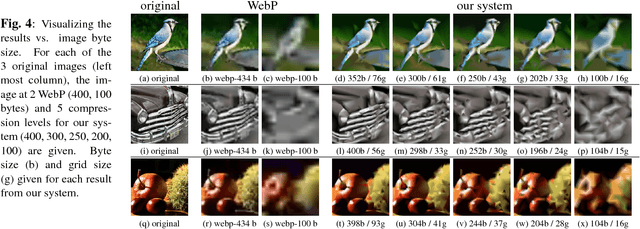
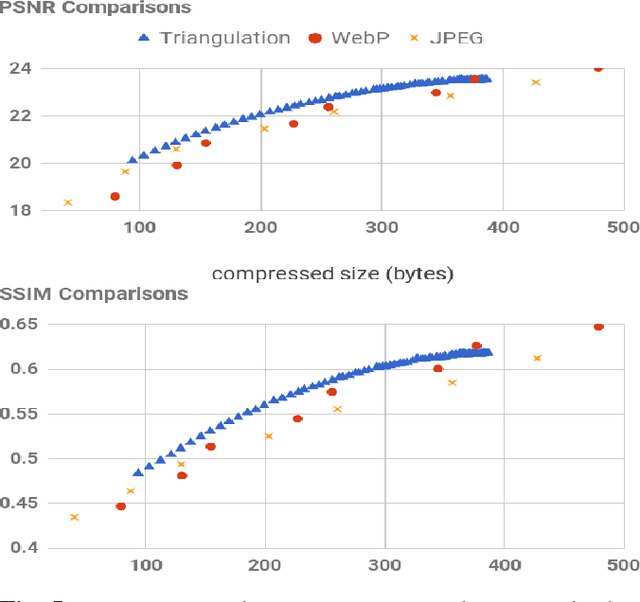
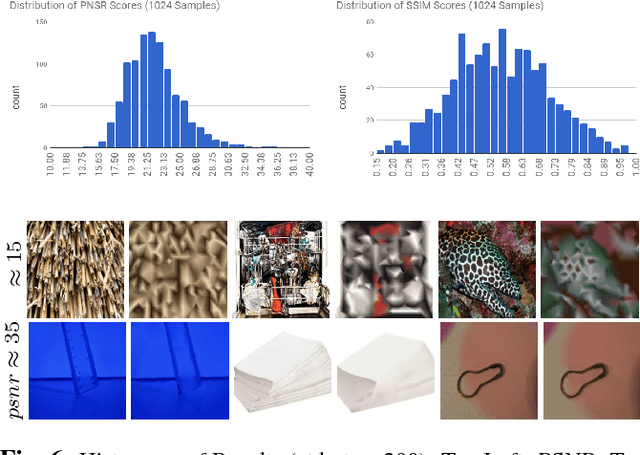
Abstract:A rapidly increasing portion of internet traffic is dominated by requests from mobile devices with limited and metered bandwidth constraints. To satisfy these requests, it has become standard practice for websites to transmit small and extremely compressed image previews as part of the initial page load process to improve responsiveness. Increasing thumbnail compression beyond the capabilities of existing codecs is therefore an active research direction. In this work, we concentrate on extreme compression rates, where the size of the image is typically 200 bytes or less. First, we propose a novel approach for image compression that, unlike commonly used methods, does not rely on block-based statistics. We use an approach based on an adaptive triangulation of the target image, devoting more triangles to high entropy regions of the image. Second, we present a novel algorithm for encoding the triangles. The results show favorable statistics, in terms of PSNR and SSIM, over both the JPEG and the WebP standards.
Image-Dependent Local Entropy Models for Learned Image Compression
May 31, 2018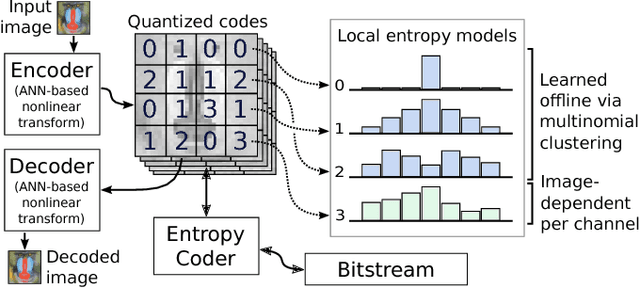



Abstract:The leading approach for image compression with artificial neural networks (ANNs) is to learn a nonlinear transform and a fixed entropy model that are optimized for rate-distortion performance. We show that this approach can be significantly improved by incorporating spatially local, image-dependent entropy models. The key insight is that existing ANN-based methods learn an entropy model that is shared between the encoder and decoder, but they do not transmit any side information that would allow the model to adapt to the structure of a specific image. We present a method for augmenting ANN-based image coders with image-dependent side information that leads to a 17.8% rate reduction over a state-of-the-art ANN-based baseline model on a standard evaluation set, and 70-98% reductions on images with low visual complexity that are poorly captured by a fixed, global entropy model.
Spatially adaptive image compression using a tiled deep network
Feb 07, 2018

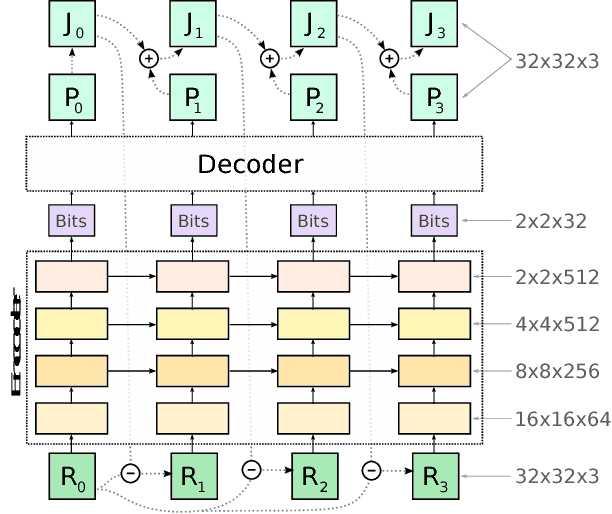

Abstract:Deep neural networks represent a powerful class of function approximators that can learn to compress and reconstruct images. Existing image compression algorithms based on neural networks learn quantized representations with a constant spatial bit rate across each image. While entropy coding introduces some spatial variation, traditional codecs have benefited significantly by explicitly adapting the bit rate based on local image complexity and visual saliency. This paper introduces an algorithm that combines deep neural networks with quality-sensitive bit rate adaptation using a tiled network. We demonstrate the importance of spatial context prediction and show improved quantitative (PSNR) and qualitative (subjective rater assessment) results compared to a non-adaptive baseline and a recently published image compression model based on fully-convolutional neural networks.
Full Resolution Image Compression with Recurrent Neural Networks
Jul 07, 2017
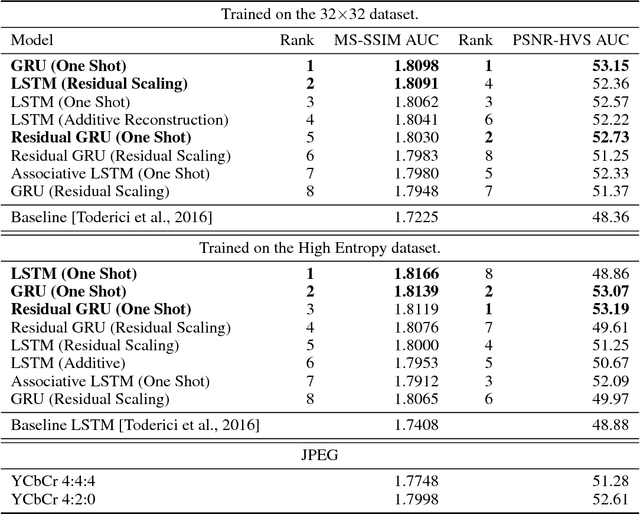

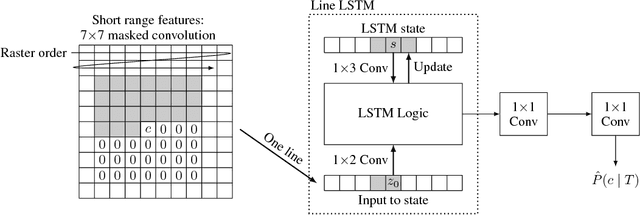
Abstract:This paper presents a set of full-resolution lossy image compression methods based on neural networks. Each of the architectures we describe can provide variable compression rates during deployment without requiring retraining of the network: each network need only be trained once. All of our architectures consist of a recurrent neural network (RNN)-based encoder and decoder, a binarizer, and a neural network for entropy coding. We compare RNN types (LSTM, associative LSTM) and introduce a new hybrid of GRU and ResNet. We also study "one-shot" versus additive reconstruction architectures and introduce a new scaled-additive framework. We compare to previous work, showing improvements of 4.3%-8.8% AUC (area under the rate-distortion curve), depending on the perceptual metric used. As far as we know, this is the first neural network architecture that is able to outperform JPEG at image compression across most bitrates on the rate-distortion curve on the Kodak dataset images, with and without the aid of entropy coding.
Target-Quality Image Compression with Recurrent, Convolutional Neural Networks
May 18, 2017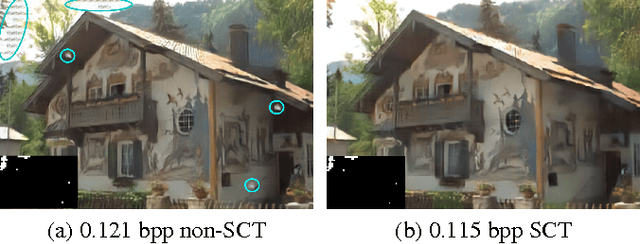
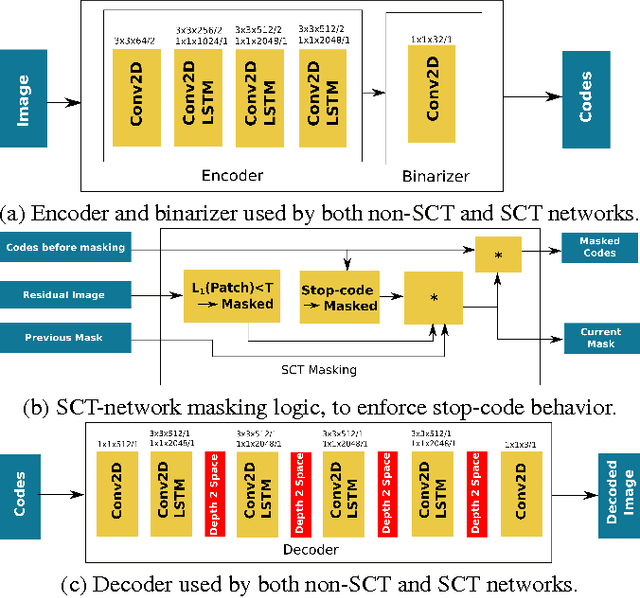
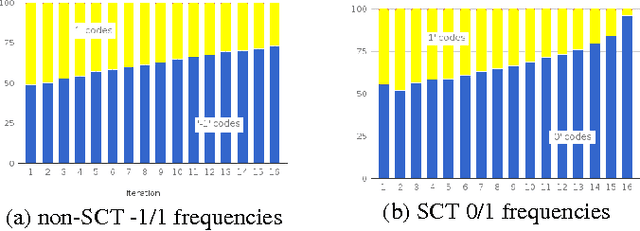
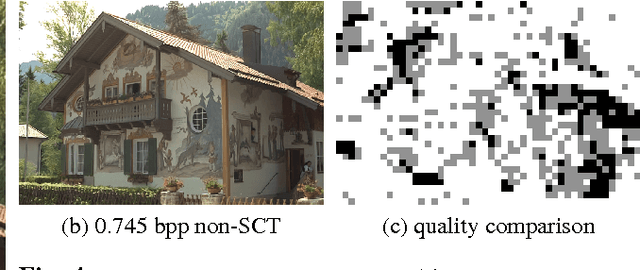
Abstract:We introduce a stop-code tolerant (SCT) approach to training recurrent convolutional neural networks for lossy image compression. Our methods introduce a multi-pass training method to combine the training goals of high-quality reconstructions in areas around stop-code masking as well as in highly-detailed areas. These methods lead to lower true bitrates for a given recursion count, both pre- and post-entropy coding, even using unstructured LZ77 code compression. The pre-LZ77 gains are achieved by trimming stop codes. The post-LZ77 gains are due to the highly unequal distributions of 0/1 codes from the SCT architectures. With these code compressions, the SCT architecture maintains or exceeds the image quality at all compression rates compared to JPEG and to RNN auto-encoders across the Kodak dataset. In addition, the SCT coding results in lower variance in image quality across the extent of the image, a characteristic that has been shown to be important in human ratings of image quality
Improved Lossy Image Compression with Priming and Spatially Adaptive Bit Rates for Recurrent Networks
Mar 29, 2017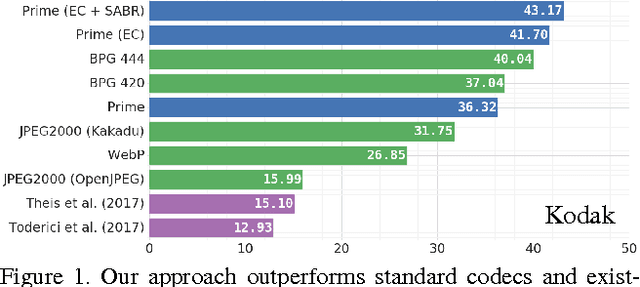
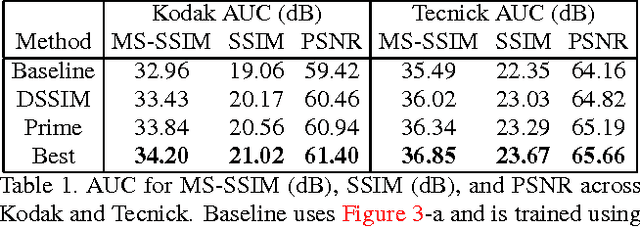
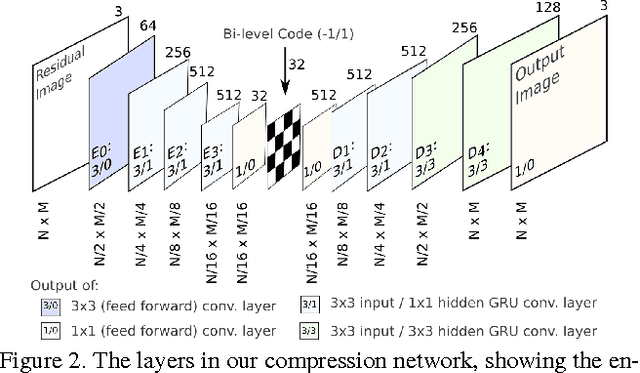

Abstract:We propose a method for lossy image compression based on recurrent, convolutional neural networks that outperforms BPG (4:2:0 ), WebP, JPEG2000, and JPEG as measured by MS-SSIM. We introduce three improvements over previous research that lead to this state-of-the-art result. First, we show that training with a pixel-wise loss weighted by SSIM increases reconstruction quality according to several metrics. Second, we modify the recurrent architecture to improve spatial diffusion, which allows the network to more effectively capture and propagate image information through the network's hidden state. Finally, in addition to lossless entropy coding, we use a spatially adaptive bit allocation algorithm to more efficiently use the limited number of bits to encode visually complex image regions. We evaluate our method on the Kodak and Tecnick image sets and compare against standard codecs as well recently published methods based on deep neural networks.
 Add to Chrome
Add to Chrome Add to Firefox
Add to Firefox Add to Edge
Add to Edge